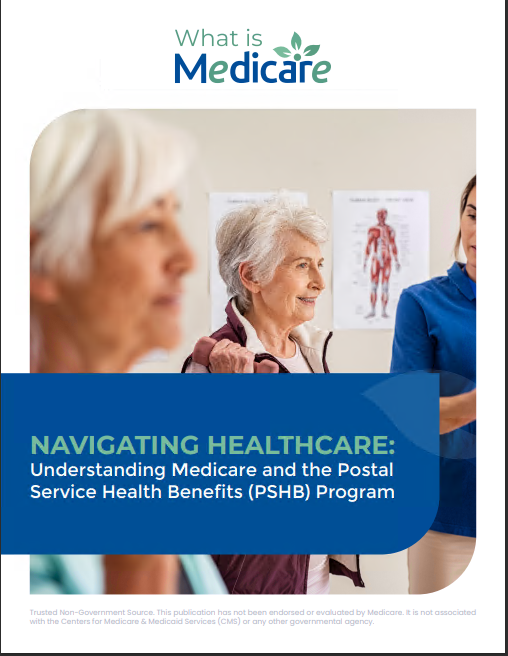Key Takeaways
-
In 2025, Medicare Part D introduces a $2,000 out-of-pocket cap on prescription drug costs, eliminating the catastrophic phase and the previous ‘donut hole’.
-
A new Prescription Payment Plan allows monthly spread-out payments for high-cost drugs, offering financial relief and predictability for enrollees.
The 2025 Shift in Medicare Part D: What It Means for You
Medicare Part D, the prescription drug benefit under Medicare, undergoes significant changes in 2025. These updates aim to improve affordability and access to medications, especially for those with chronic conditions and high drug costs. If you’re already enrolled or considering Part D coverage, understanding these changes is essential to managing your healthcare costs effectively.
The End of the Coverage Gap: What Replaces the ‘Donut Hole’
Until 2024, Medicare Part D beneficiaries navigated a complex coverage structure that included a deductible phase, initial coverage phase, coverage gap (commonly known as the ‘donut hole’), and catastrophic phase. In 2025, this changes significantly.
-
The coverage gap is eliminated.
-
Once your out-of-pocket costs reach $2,000, you move into full coverage for the remainder of the year.
-
The catastrophic phase no longer applies because you are no longer responsible for additional costs beyond the cap.
This structural simplification removes financial uncertainty and helps you better plan your healthcare spending.
Annual Deductible and Initial Coverage Phase
For 2025, the standard Part D deductible increases slightly to $590. This is the amount you must pay out of pocket before your plan starts sharing costs. After you meet this deductible, you enter the initial coverage phase:
-
During this phase, your plan pays a portion of your drug costs.
-
You pay copayments or coinsurance, depending on the medication tier.
-
Once your total out-of-pocket spending (including deductible and your share of drug costs) reaches $2,000, you enter the new full coverage phase.
This reset in structure creates a clearer and more manageable path for enrollees.
Introduction of the Medicare Prescription Payment Plan
Starting in 2025, a new option called the Medicare Prescription Payment Plan is available to all Part D enrollees. This feature is especially helpful if you face high upfront costs early in the year.
Key Features:
-
Spreads your out-of-pocket drug costs over 12 monthly payments.
-
Applies once your plan confirms your drug costs are above the threshold.
-
You don’t pay the full deductible or copays at the pharmacy upfront—instead, you receive a bill from your plan each month.
This monthly payment option adds financial flexibility and helps avoid financial hardship at the beginning of the year when expenses typically peak.
Improved Transparency and Billing Notices
To support these changes, Medicare is enhancing transparency in how drug plans communicate with enrollees. Beginning mid-2025:
-
Plans must send a Mid-Year Enrollee Notification of Unused Supplemental Benefits between June 30 and July 31.
-
This personalized notice will show what supplemental benefits (like over-the-counter credits or transportation) you haven’t used yet.
By knowing what’s still available, you can make full use of your benefits without leaving value on the table.
Who Benefits Most From These Changes?
These updates are especially valuable for:
-
Individuals who take expensive medications for chronic conditions.
-
Enrollees with limited incomes who previously struggled with high drug costs.
-
Those who prefer predictable monthly payments instead of unpredictable pharmacy bills.
You now have more control over your drug expenses, and many will see a direct financial benefit from the $2,000 out-of-pocket cap.
How the New Cap Works with Your Plan
The $2,000 cap in 2025 applies to your true out-of-pocket costs (TrOOP)—the expenses you pay directly, including:
-
Your deductible
-
Coinsurance or copays
-
Any assistance from certain programs (excluding manufacturer discounts under the coverage gap)
Once your TrOOP hits $2,000, your plan pays 100% of covered drug costs for the rest of the year. You won’t owe anything more, even if your medications are very costly.
Coordination with Other Programs
Medicare continues to coordinate with Extra Help (also known as the Low-Income Subsidy or LIS), which reduces Part D costs for eligible individuals. In 2025:
-
More people may qualify for Extra Help due to inflation-adjusted income and resource thresholds.
-
Extra Help recipients often pay lower or no deductibles, and fixed copays instead of coinsurance.
-
Those enrolled in both Medicare and Medicaid are automatically qualified for Extra Help.
If you think you may be eligible, it’s worth applying or confirming your eligibility this year.
Timeline to Remember in 2025
Several key dates and periods are important for Medicare Part D changes in 2025:
-
January 1: All new benefits, including the $2,000 cap and Prescription Payment Plan, take effect.
-
June 30 – July 31: Mid-Year Enrollee Notification of Unused Benefits sent out.
-
October 15 – December 7: Annual Open Enrollment Period. You can review your current plan and make changes for 2026.
Staying aware of these dates helps you take full advantage of everything Medicare Part D now offers.
What You Should Do Now
To make the most of these changes in 2025, take the following steps:
-
Review your plan: See how your current coverage aligns with the new cost structure.
-
Check your prescription list: Determine whether any high-cost drugs will push you near or past the $2,000 out-of-pocket threshold.
-
Ask about the new payment option: If monthly budgeting is important to you, contact your plan about enrolling in the Prescription Payment Plan.
-
Apply for Extra Help if eligible: The savings can be substantial, especially with reduced deductibles and out-of-pocket costs.
-
Plan for Open Enrollment: Use the fall period to compare plans, even if you’re happy with your current one.
Why Staying Updated on Part D Matters More Than Ever
In 2025, Medicare Part D no longer resembles what it was just a year ago. The simplification of coverage phases, introduction of capped spending, and flexible payment structures make it easier for you to stay on top of your medication needs without unexpected financial burdens.
However, these improvements only help if you understand them and act on them. Take the time now to learn how these changes apply to you personally. And when in doubt, get support from a licensed insurance agent listed on this website who can walk you through your plan options.









